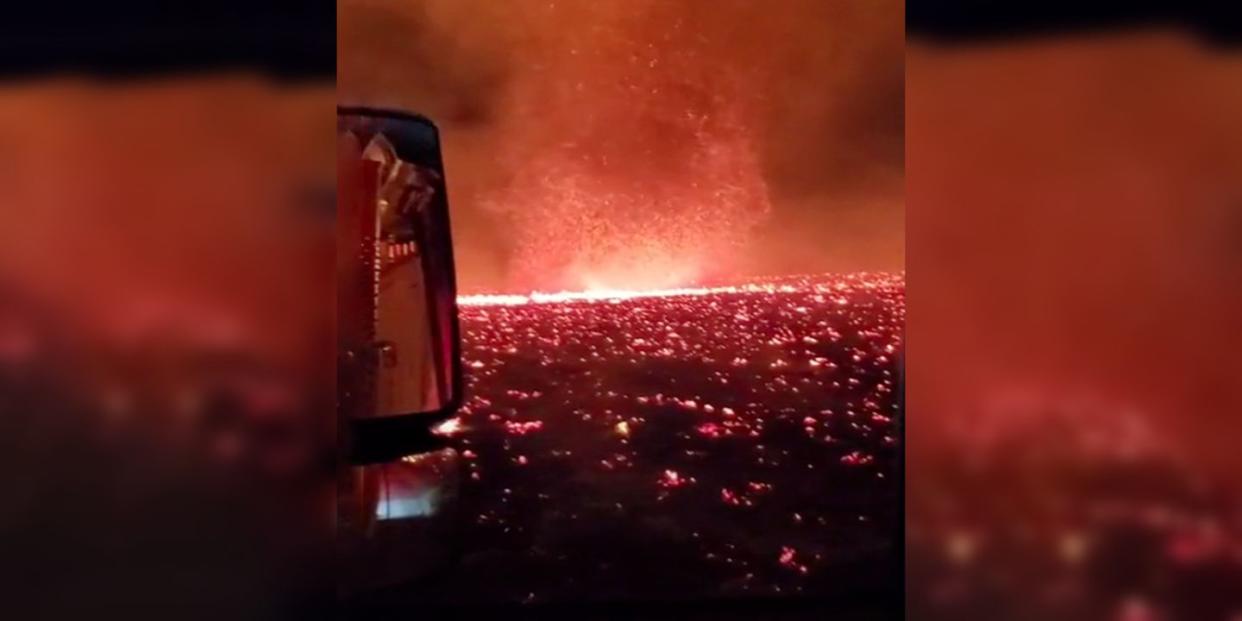Watch Terrifying Footage of a Chaotic Fire Tornado in California

A fire tornado in California was likely formed by miles-high heat plumes that crashed into the higher atmosphere.
True fire-caused tornadoes are very rare, with just a few documented instances before this year.
Compounding climate-change factors have likely increased the number of fire tornadoes.
A dramatic clip of a swirling fire tornado in California has spread since TikTok user @flamecatcher2 first posted the clip on September 11:
It’s shocking footage, but this isn’t unprecedented. In 2018, a fire tornado during that year’s Carr Fire in Northern California inspired three scholars to publish a paper about how these tornadoes begin. In November 2019, The Conversation published a similar explainer about the fire tornadoes that form from Australian bushfires. And experts say there have been three fire tornadoes in California this year alone.
So what on Earth are fire tornadoes, and how do they form?
Fire tornadoes begin with large, severe fires whose upward columns of extremely hot air interact with the atmosphere and cause clouds to form. Think of how molten metal hisses in a blacksmith’s water bucket: the contrasts create an extreme outcome.
“If the conditions are not too severe, the fire may produce a cloud called a pyrocumulus, which is simply a cloud that forms over the fire. These are typically benign and do not affect conditions on the ground,” The Conversation explains. “But if the fire is particularly large or intense, or if the atmosphere above it is unstable, this process can give birth to a pyrocumulonimbus—and that is an entirely more malevolent beast.”
These are just normal cloud terms with pyro- tacked on: cumulus, which are your typical fluffy clouds, and cumulonimbus, which are also known as thunderheads. A pyrocumulonimbus cloud, therefore, is a fiery thunderhead. And even so, for this to spawn a fire tornado is very rare. Fires naturally form fire whirls, which are much smaller and less “malevolent.” A true pyrotornadogenesis (!) almost never occurs. From the 2018 paper:
“Destructive fire-generated vortices (FGVs) can occur in both urban and wildland fires. These vortices feature upright columns of vigorously rotating ash, smoke, and often flame. Whereas most FGVs are small, some large vortices can generate tornado strength winds, and in very rare cases, actual tornadoes can form when a FGV is linked to an overlying pyrocumulonimbus. For example, the Canberra Firestorm of 2003 produced the sole documented case of pyrotornadogenesis, forming a long-track F2-intensity tornado connected to a deep [pyrocumulonimbus cloud].”
Extreme fire events are more common than ever before in this year’s California wildfires, experts say, partly because of the deadly heatwave happening in tandem.
“Fire tornadoes have spun up by the handful in at least three big wildfires in the past three weeks, based on radar data,” the Washington Post reports. Are these technically pyrotornadogeneses according to the scientific definition? We’ll have to wait and see what scientists observe once they analyze all the available data.
You Might Also Like

